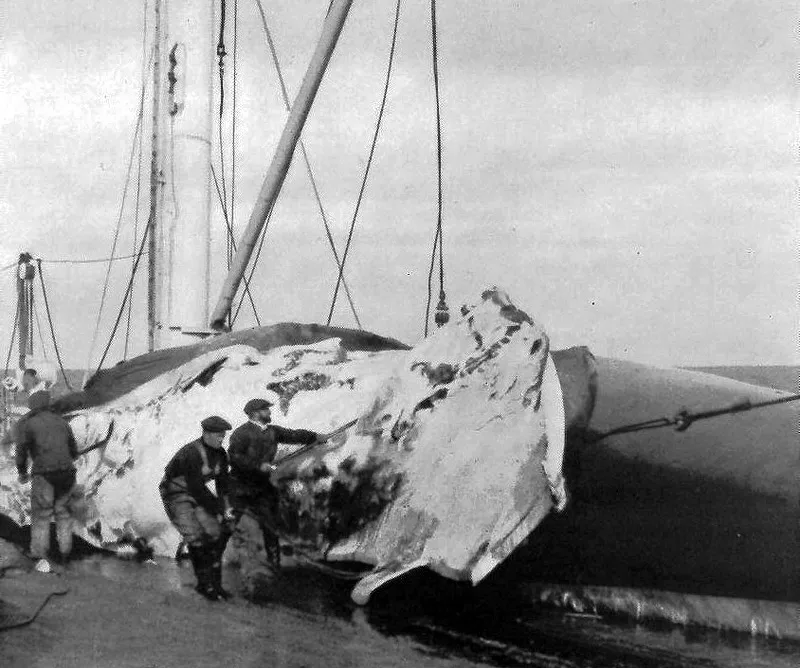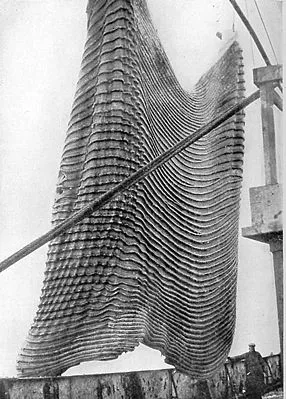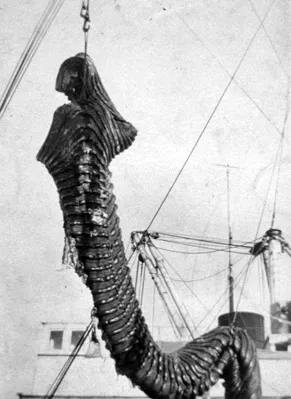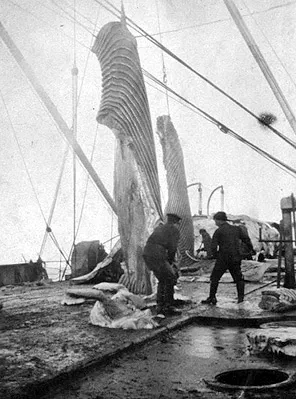Removing a Blubber Blanket
Whales and Whaling pictures
Next
Previous
Back to gallery
Back to whale and whaling
thumbnails




Removing a blubber blanket from a whale
Cuts would be made at strategic points and hole cut for the insertion of "toggles" these are large pieces of wood, maybe two feet long attached via their middle to a line and an overhead derrick (crane). When the cuts had been made and the toggle attached, the flenser would signal to the winch operator to haul away the sheet of blubber. In a fraction of the time that it would have taken by previous outboard flensing methods, great "blankets" of blubber could be neatly removed from a whale for processing.
In the first picture a wire rope can be seen hauling to the right of the picture and pulling off the blubber blanket as the flensers cut it free from the remaining connective tissue. The second picture shows a huge "blubber blanket" removed from a large blue whale with a man for size comparison. This had been taken after the outboard flensing of a whale, so allowing the whale to be turned over as the blanket was cut away. During inboard flensing the blanket would be cut off in two or more pieces as it was more difficult to turn the whale on the deck than in the water.
Such blubber blankets weighed many tonnes and it was not unknown for the toggle to give way and the whole thing to fall onto the deck - and onto an unfortunate crewman who wasn't constantly watching out around him for such dangers.
There were two main reasons that the Antarctic was considered the prime whaling location, the first was that whales would gather there in great abundance due to the amount of food there that grew as a result of great algal blooms during the summer months. The second was that as a result of all this feeding and processing of food, whales in Antarctica laid down great amounts of blubber. In Antarctica whales were at their peak and the fattest they would grow. Whales that were hunted in other parts of the world at other times of the year, even those from the same populations, would yield far lower amounts of fat as the whales had already spent some considerable time burning up their considerable resources. Many whales in fact would not feed properly again for several months after leaving Antarctica, months during which they lived off their reserves which would grow thinner. Only in Antarctica therefore, was the larder fully stocked.
